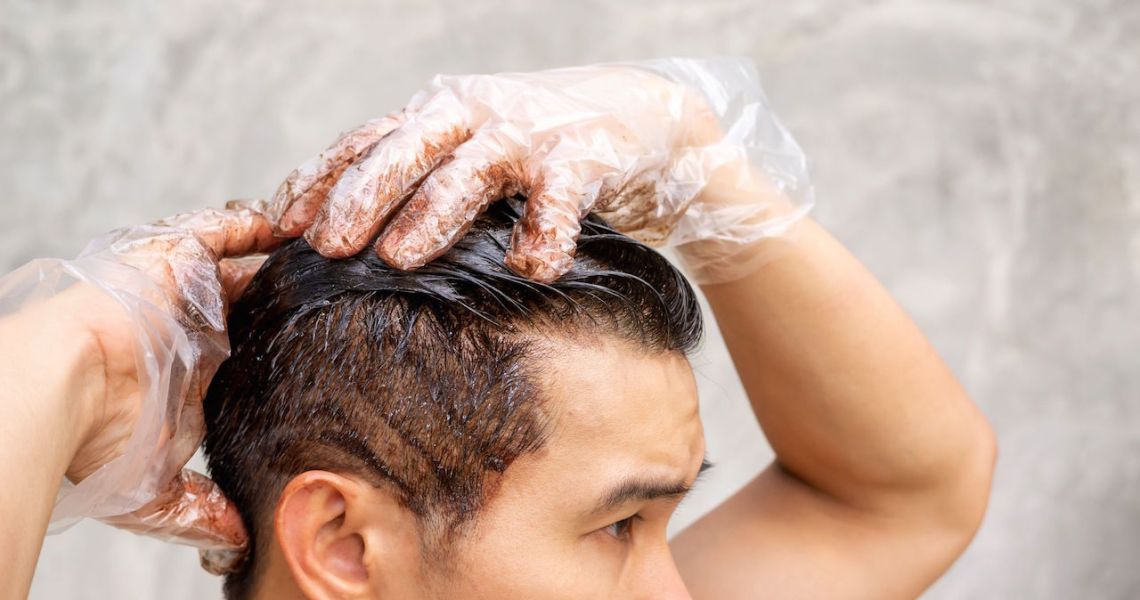As indie men’s grooming brands have cast their attention beyond disrupting shaving products, they are forcing heritage grooming brands to finally evolve their product portfolios.
On Monday, Unilever-owned body spray brand Axe released two lighter scented products across deodorant and body spray through a commercial campaign. For the first time, these products use essential oils, and are formulated without aluminum, parabens or dyes. This follows the recent branding overhaul of Procter & Gamble-owned Old Spice in January, which aimed to reach younger male consumers with new products like an aluminum-free deodorant. Thirty-three-year-old hair-dye brand Just For Men has also been rolling out new packaging and formulations since January, just as indie brands like Cremo, Madison Reed and eSalon entered the hair color market this year. While the aforementioned brands, alongside the likes of Gillette, previously debuted new marketing campaigns that challenged traditional ideas around masculinity, the product portfolios of most of these brands are finally getting an update, as well.
In the case of Axe, the lighter scents are driven in part to address teenagers’ present grooming habits, according to Mark Lodwick, Axe U.S. brand director. Axe retails nationwide through mass-retailers like Walmart and Duane Reade, as well as a variety grocery stores.
“Our target has always been teen guys, but the present-day guy is different from 10 years ago,” he said. “The evolution of our guys’ style, interest and masculinity has redefined not only them, but also us as a brand. We’ve definitely seen a segment of our core Gen-Z guy gravitate toward lighter and subtler fragrances.”
This is notable, as Axe has become a lightning rod for cultural jokes around young men navigating the dos and don’ts of grooming, particularly when it comes to the strength of their colognes. The strong odor of Axe has even made headlines at various points since the brand’s inception in 1983. Lodwick was unable to quantify how much lighter the new scents are, but it’s not Axe’s first attempt at overhauling its image. Between 2017 and 2019. it sought to embrace a modern version of manhood through its marketing campaigns.
Overall, the $8.9 billion U.S. men’s grooming market is forecasted to grow by over 7% by 2023, to $9.5 billion, according to market research firm Euromonitor International. Despite indie brand disruption, legacy players still dominate. Combe Inc.’s Just for Men ranks No. 1 in hair care, followed by Axe and L’Oréal Groupe’s L’Oréal Paris. According to Kline & Company’s Cosmetics & Toiletries USA 2019 Annual Service report, Just for Men in the U.S. has grown from 10.4% market share in 2014 to 11.0% in 2019.
Still, Just For Men is updating the look and feel of its packaging and products. All Just For Men products, including its Beard & Mustache sub-brand, have new model photos and display the applicator on the box. Two products have also been renamed, such as the Shampoo-in-Color, which was previously called Original Formula, and Easy Comb-In Color, formerly known as AutoStop. Both boast new formulas that include keratin, olive oil and vitamin E as nourishing ingredients. Previous class-action lawsuits against the brand allege that Just For Men hair dyes were “more dangerous than an ordinary consumer would expect.” No large settlements around Just for Men’s lawsuits have been publicly reported, and two attempts to settle failed.
Ad position: web_incontent_pos1
“[There is] a little bit of philosophy like if it ain’t broke, don’t fix it, but at the same time, we want to make sure that we keep up with what’s happening, especially in men’s grooming,” said Vanessa Reggiardo, Combe svp and gm of men’s care North America. “We’re proud of the fact that we’re a generational brand, but we don’t want to be [known as] your grandpa’s brand.”
Just For Men also relaunched its e-commerce platform in the first quarter, focusing on new content like testimonials and before-and-after photos, and digital tools like a hair dye shade selector. Just For Men’s e-commerce only launched in 2016, and the brand boasts a rewards program (which began in 2005) with over 1 million members. Reggiardo declined to state wholesale versus e-commerce sales, or overall revenue and growth. The brand refresh was intended to extend to the in-store channel, where Just For Men is sold at retailers like CVS and Walmart, but that is on indefinite pause due to Covid-19, said Reggiardo. It consisted of LED signage, before-and-after imagery and QR codes on gondolas.




